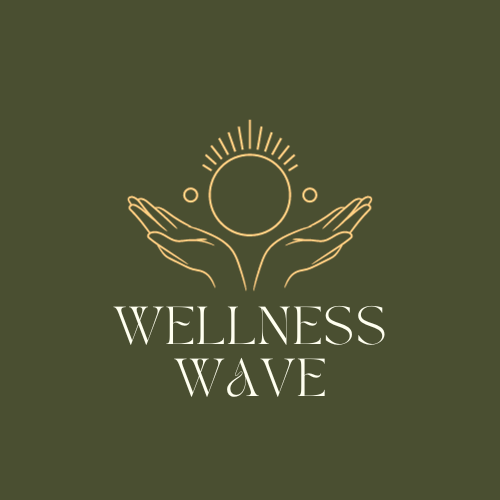Are you looking for effective ways to enhance your holistic health and achieve a greater sense of well-being? Look no further than detoxification techniques. Detoxification is a process that aims to rid your body of harmful toxins and restore its natural balance. In this article, we will explore a variety of detoxification techniques that can help you cleanse your body, rejuvenate your mind, and promote overall holistic health. From dietary changes to herbal remedies, we will delve into the world of detoxification and equip you with the knowledge to embrace a healthier and more vibrant lifestyle.

Overview of Detoxification Techniques
Understanding the concept of detoxification
Detoxification is the process of eliminating toxins from the body to support overall health and well-being. It involves various systems and organs in the body working together to remove harmful substances and restore balance. By eliminating toxins, the body can function optimally and maintain a state of holistic health.
The importance of detoxification for holistic health
Detoxification plays a crucial role in maintaining holistic health. With exposure to environmental pollutants, processed foods, and stress, our bodies can accumulate toxins that can have a negative impact on our physical and mental well-being. By regularly practicing detoxification techniques, we can support our body’s natural detoxification processes and promote overall health.
Different types of toxins and their impact on the body
Toxins can come from a variety of sources, such as environmental pollutants, pesticides, processed foods, and even stress. These toxins can disrupt the body’s natural detoxification processes and lead to various health issues. Some common types of toxins include heavy metals, pesticides, synthetic chemicals, and metabolic waste products. It is important to understand the impact of these toxins on the body and take steps to eliminate them through detoxification techniques.
Natural Ways to Support the Body’s Detoxification Process
Consuming a nutrient-rich diet
One of the most effective ways to support the body’s detoxification process is by consuming a nutrient-rich diet. This includes incorporating plenty of fruits, vegetables, whole grains, and lean proteins into your meals. These foods are rich in essential vitamins, minerals, and antioxidants that help the body neutralize and eliminate toxins.
Hydrating the body with water and herbal teas
Staying hydrated is essential for optimal detoxification. Drinking an adequate amount of water helps flush out toxins from the body and supports various bodily functions. Additionally, herbal teas, such as dandelion tea, ginger tea, and green tea, can provide additional detoxification benefits. These teas contain natural compounds that stimulate detoxification processes in the body.
Practicing intermittent fasting
Intermittent fasting involves restricting your eating window to a certain number of hours per day. This practice allows your body to enter a state of fasting, which promotes cellular repair, autophagy, and detoxification. By giving your digestive system a break, intermittent fasting allows your body to focus on eliminating toxins and promoting overall health.
Incorporating exercise and physical activity
Regular exercise and physical activity are not only beneficial for cardiovascular health and weight management but also support the body’s detoxification processes. When we exercise, we increase blood flow, enhance lymphatic circulation, and promote sweating, all of which aid in toxin elimination. Engaging in activities such as walking, yoga, or strength training can have a positive impact on your body’s detoxification pathways.
Getting enough sleep for optimal detoxification
Quality sleep is essential for the body to restore and rejuvenate itself. During sleep, the body goes through various detoxification processes, including the clearance of waste products from the brain. Lack of sleep or poor sleep quality can hinder these detoxification processes and lead to an accumulation of toxins. Therefore, prioritizing good sleep hygiene and ensuring you get enough restful sleep is crucial for supporting your body’s detoxification process.
Reducing stress levels and practicing mindfulness
Chronic stress can have a detrimental impact on the body’s detoxification processes. High levels of stress can impair liver function, disrupt hormone balance, and weaken the immune system. Therefore, it is important to engage in stress-reducing activities and practice mindfulness to support your body’s detoxification pathways. Techniques such as meditation, deep breathing exercises, and yoga can help calm the mind and reduce stress levels.
1. Liver and Kidney Support
Understanding the role of liver and kidneys in detoxification
The liver and kidneys are vital organs that play a crucial role in detoxification. The liver is responsible for metabolizing toxins, while the kidneys filter and eliminate waste products through urine. These organs work together to process and eliminate toxins, ensuring that the body maintains a healthy balance. Understanding the role of the liver and kidneys in detoxification is essential for implementing effective detoxification techniques.
Foods and herbs that support liver and kidney health
Several foods and herbs can support the health and function of the liver and kidneys. Incorporating foods rich in antioxidants, such as berries, leafy greens, and cruciferous vegetables, can help protect these organs from damage caused by toxins. Additionally, herbs like milk thistle, dandelion root, and turmeric can provide specific support to the liver and kidneys, aiding in their detoxification processes.
Detoxifying liver and kidney cleanse protocols
Liver and kidney cleanse protocols can provide an additional boost to the body’s detoxification processes. These protocols often involve consuming specific foods, herbs, and supplements that target the liver and kidneys, supporting their natural detoxification functions. It is important to consult with a healthcare professional or a qualified nutritionist before embarking on a cleanse to ensure it is appropriate for your individual needs.
2. Colon Cleansing
The importance of a healthy colon for detoxification
A healthy colon is essential for effective detoxification. The colon, also known as the large intestine, plays a vital role in eliminating waste and toxins from the body. If the colon is not functioning optimally, toxins can build up and be reabsorbed into the body, leading to various health issues. Therefore, ensuring the health of the colon is crucial for supporting the body’s detoxification processes.
Natural methods to cleanse the colon
There are several natural methods to cleanse the colon and promote optimal detoxification. Consuming a high-fiber diet, including foods like fruits, vegetables, whole grains, and legumes, can help promote regular bowel movements and prevent constipation. Additionally, incorporating foods with natural laxative properties, such as prunes and flaxseeds, can aid in colon cleansing. It is also important to stay hydrated and be physically active, as these factors contribute to a healthy colon.
Colon hydrotherapy and enemas as detoxification techniques
Colon hydrotherapy and enemas are detoxification techniques that involve the flushing of the colon with water or other solutions. These methods can help remove built-up waste and toxins from the colon, promoting detoxification and overall colon health. It is important, however, to consult with a healthcare professional before attempting colon hydrotherapy or enemas, as they may not be suitable for everyone and should be done under proper supervision.

3. Sweating and Sauna Therapy
The role of sweating in detoxification
Sweating is a natural process through which the body eliminates toxins. When we sweat, toxins are excreted through the skin, providing a pathway for their removal. Engaging in activities that induce sweating, such as exercise, sauna therapy, or hot yoga, can aid in detoxification by promoting toxin elimination through sweating.
Health benefits of sauna therapy
Sauna therapy, also known as heat therapy, involves using a sauna to induce sweating and promote detoxification. Saunas provide various health benefits, including improved circulation, relaxation, and stress relief. The heat from the sauna helps open up the pores, allowing toxins to be eliminated through sweating. Regular sauna sessions can support the body’s detoxification process and contribute to overall health.
Different types of saunas and their detoxification benefits
There are different types of saunas available, each with its own unique benefits for detoxification. Traditional Finnish saunas, infrared saunas, and steam rooms are some common types. Traditional saunas use high temperatures to induce sweating, while infrared saunas use infrared rays to penetrate the body and promote detoxification. Steam rooms, on the other hand, provide a moist environment that can help open up the pores and facilitate sweating. Choosing the right type of sauna depends on individual preferences and health considerations.
4. Dry Brushing
Understanding the benefits of dry brushing
Dry brushing is a technique that involves using a dry brush on the skin to support detoxification. The bristles of the brush help exfoliate the skin, improve circulation, and stimulate the lymphatic system. Dry brushing can aid in the removal of dead skin cells and encourage the elimination of toxins through the skin.
How to perform dry brushing for detoxification
To perform dry brushing, use a natural bristle brush with firm bristles. Begin brushing at your feet and move upwards, using long strokes towards the heart. Brush each area of the body several times, applying gentle pressure. It is important to note that dry brushing should be done on dry skin before showering or bathing. Be mindful of sensitive areas and avoid any broken or irritated skin.
Precautions to keep in mind while dry brushing
While dry brushing can be a beneficial practice for detoxification, there are some precautions to keep in mind. Avoid brushing over areas with broken or irritated skin, as this can cause further damage. It is also important not to brush too vigorously, as this can cause skin irritation. After dry brushing, it is recommended to moisturize the skin to keep it hydrated and nourished.
5. Breathwork and Deep Breathing Exercises
The role of breathwork in detoxification
Breathwork involves specific breathing techniques that can support the body’s detoxification processes. Deep breathing exercises help increase oxygen flow, improve lung capacity, and enhance the removal of carbon dioxide. By focusing on deep, conscious breathing, you can activate the body’s parasympathetic nervous system, which promotes relaxation and supports detoxification.
Types of deep breathing exercises for detoxification
There are various deep breathing exercises that can aid in detoxification. One common technique is diaphragmatic breathing, also known as belly breathing, where you focus on expanding your belly as you inhale deeply. Another technique is alternate nostril breathing, which involves alternating the inhalation and exhalation through each nostril. These exercises can be practiced at any time and can be incorporated into your daily routine to support detoxification.
Incorporating breathwork into daily routine
Incorporating breathwork into your daily routine can have significant benefits for detoxification and overall well-being. You can set aside a few minutes each day to practice deep breathing exercises, either in the morning to energize yourself or in the evening to promote relaxation and restful sleep. Engaging in breathwork regularly can help reduce stress, improve mental clarity, and support your body’s detoxification processes.
6. Lymphatic System Support
Understanding the role of the lymphatic system in detoxification
The lymphatic system plays a crucial role in detoxification by carrying toxins and waste products away from the tissues and organs. It is responsible for filtering and cleansing the body’s interstitial fluid and transporting lymphocytes to fight against infections and disease. Supporting the lymphatic system is key to maintaining optimal detoxification.
Techniques to stimulate lymphatic flow
There are several techniques that can help stimulate lymphatic flow and support detoxification. Dry brushing, mentioned earlier, can help invigorate the lymphatic system by encouraging lymphatic drainage. Another technique is rebounding, which involves gentle bouncing on a mini-trampoline, promoting lymphatic circulation. Lymphatic massage, performed by a trained professional, can also aid in stimulating lymphatic flow.
Dry brushing, rebounding, and lymphatic massage
Dry brushing, rebounding, and lymphatic massage are all effective ways to support the lymphatic system and enhance detoxification. Dry brushing, as mentioned earlier, can be done at home using a dry brush. Rebounding involves gentle bouncing on a mini-trampoline, providing a low-impact exercise that stimulates lymphatic circulation. Lymphatic massage, performed by a trained therapist, involves specific techniques to promote lymphatic flow and detoxification.
7. Detoxifying Baths
Benefits of detoxifying baths for holistic health
Detoxifying baths can provide numerous benefits for holistic health. They help relax the mind and body, relieve stress, and support detoxification processes. Detox baths can promote sweating, enhance circulation, and improve the elimination of toxins through the skin. Taking regular detoxifying baths can contribute to overall well-being and support the body’s natural detoxification pathways.
Different types of detoxifying baths
There are various types of detoxifying baths that you can try to support your body’s detoxification processes. Epsom salt baths are a popular choice, as the magnesium sulfate in Epsom salts can help draw out toxins from the body and promote relaxation. Adding essential oils, such as lavender or tea tree oil, can provide additional benefits for relaxation and detoxification. Other options include bentonite clay baths, apple cider vinegar baths, and seaweed baths.
Incorporating essential oils and Epsom salts into baths
Incorporating essential oils and Epsom salts into your detoxifying baths can enhance the benefits and promote relaxation. Add a few drops of your favorite essential oils to your bathwater and mix in a cup or two of Epsom salts. Lavender, chamomile, and eucalyptus are popular choices for relaxation and detoxification. Soak in the bath for at least 20 minutes to allow your body to absorb the beneficial properties.
Conclusion
Incorporating detoxification techniques into your lifestyle is essential for maintaining holistic health. By understanding the concept of detoxification, recognizing the importance of supporting the body’s natural detoxification processes, and implementing various techniques, you can support your overall well-being. Whether it’s through consuming a nutrient-rich diet, hydrating the body, practicing intermittent fasting, or engaging in physical activity, finding the right balance and individual approach to detoxification is key. By prioritizing detoxification practices, you can experience the long-term benefits of improved health, increased energy levels, and enhanced overall well-being.

